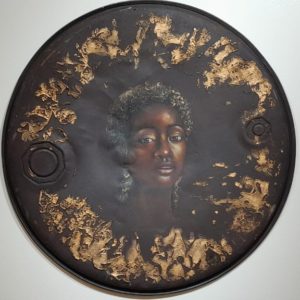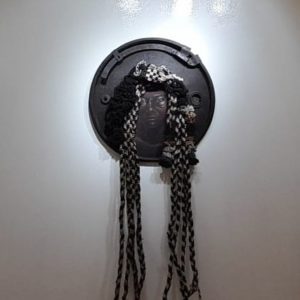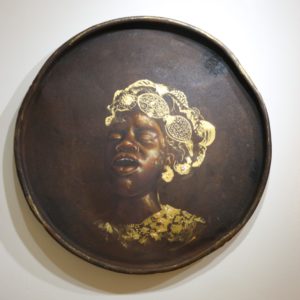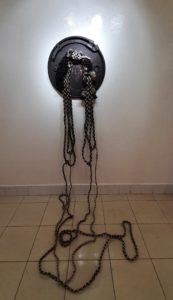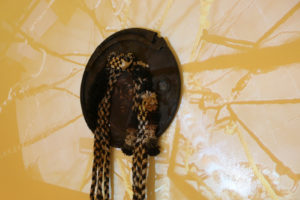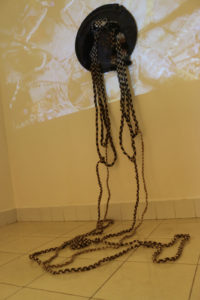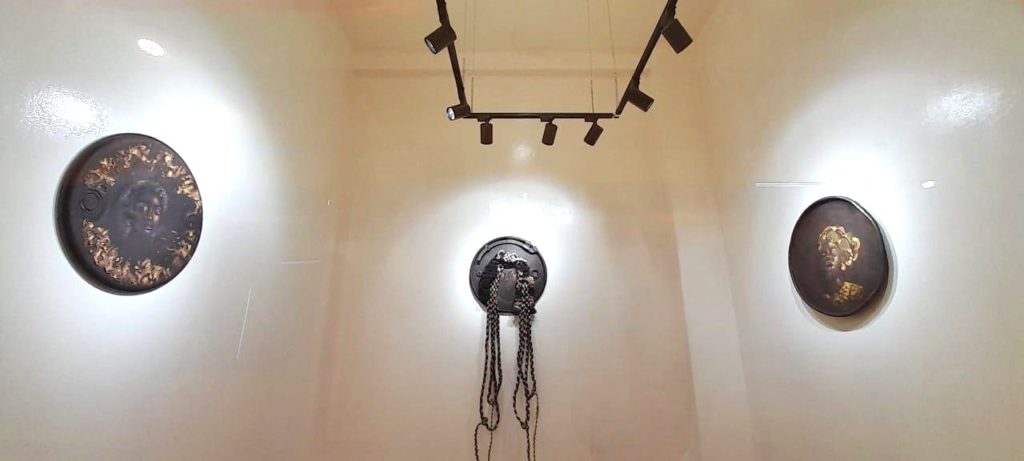Diandi Otenes
Comisaria/curator: Georgina Santos da Silva
20 de enero – 20 de abril 2024 / January 20th – April 20th 2024
Texto de sala – Exhibition text
.
La exposición, denominada en la lengua afro-boliviana como “Diandi Otenes” (¿De dónde eres?), concebida por la mente creativa de Sharon Pérez, plantea una urdimbre de memoria donde presenciamos por medio de una video instalación y obras escultórico-pictóricas, adentrándonos en una escena donde un grupo de mujeres pertenecientes a la comunidad afro-boliviana (matronas de la misma) se encuentran entretejiendo, trenzando cabellos, narrando relatos y discutiendo asuntos inherentes al cabello en sí mismo. En las obras materiales, las trenzas se simbolizan con cuerdas, fusionándose de manera casi esotérica con el audio y las proyecciones que inundan la sala de exhibición. Entre el entrecruzamiento de las cuerdas y la amalgama de las narrativas de las mujeres comunales, se plasma una trama que se inicia desde el cabello afro como emblema de identidad. El acto de narrar historias en torno al cabello mientras se lleva a cabo el peinado culmina en una suerte de alegoría del tiempo en sí mismo, donde, a semejanza de las sinapsis neuronales, las mujeres tejen un entramado neurológico que no sucumbe y que enfatiza la necesidad de recobrar y preservar la identidad.
Georgina Santos da Silva
.
The exhibition, known in the Afro-Bolivian language as “Diandi Otenes” (Where are you from?), conceived by the creative mind of Sharon Pérez, presents a tapestry of memory where we witness through a video installation and sculptural-pictorial works, immersing ourselves in a scene where a group of women belonging to the Afro-Bolivian community (matrons of the same) are found weaving, braiding hair, narrating stories, and discussing issues inherent to hair itself. In the physical works, the braids are symbolized with ropes, merging in an almost esoteric manner with the audio and projections that flood the exhibition hall. Among the interweaving of the ropes and the amalgamation of the narratives of the communal women, a plot is depicted that begins from Afro hair as an emblem of identity. The act of narrating stories around hair while the styling is being done culminates in a sort of allegory of time itself, where, akin to neuronal synapses, women weave a neurological fabric that does not succumb and emphasizes the need to reclaim and preserve identity.
Georgina Santos da Silva


